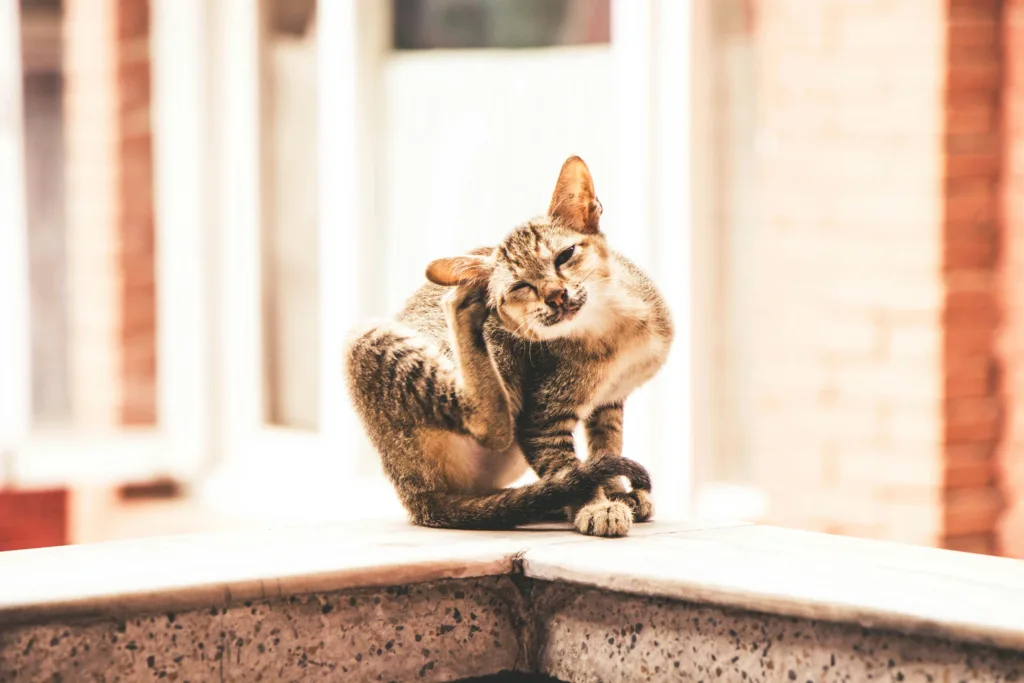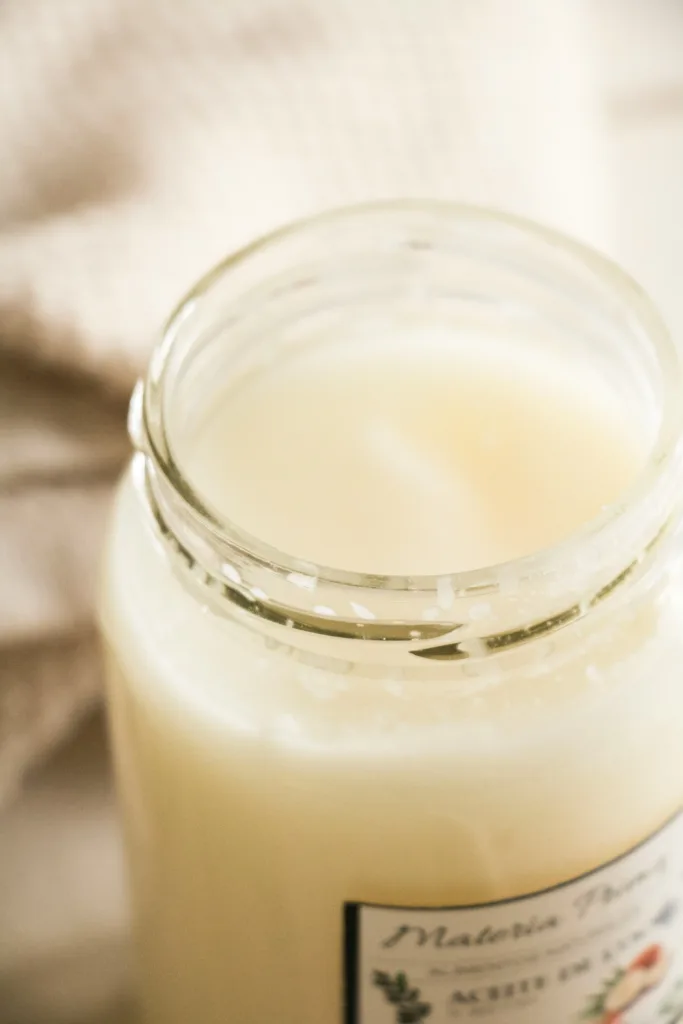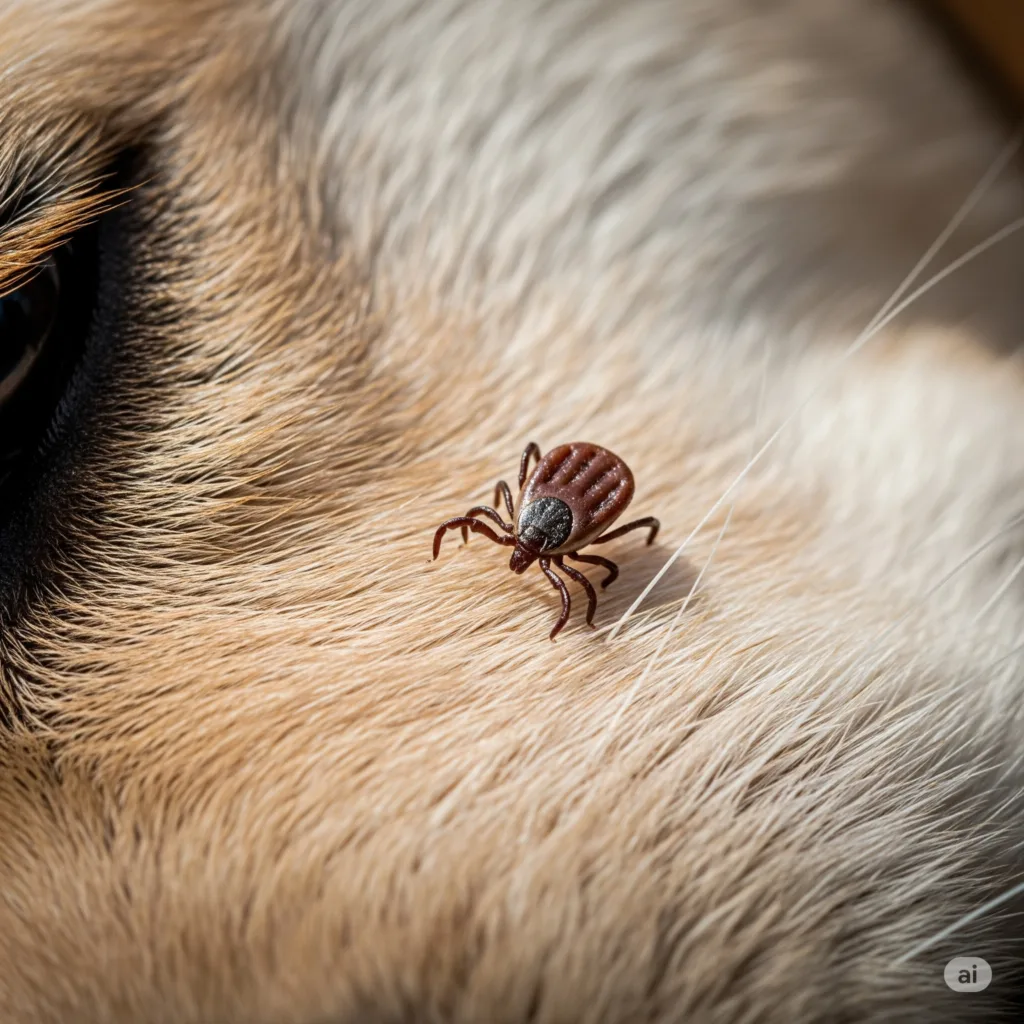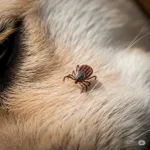Introduction

India’s diverse climate and vibrant environment provide the perfect conditions for parasites like ticks and fleas to thrive. For pet parents, these pesky creatures can be a constant source of concern. Not only do they cause discomfort for your furry companions, but they also pose serious health risks. This comprehensive guide will walk you through effective strategies to protect your pets and keep your home parasite-free.
Understanding Ticks and Fleas
Ticks: These are external parasites that attach themselves to your pet’s skin and feed on their blood. Ticks are commonly found in grassy areas, forests, or even urban parks. In India, species such as the brown dog tick (Rhipicephalus sanguineus) are prevalent.
Fleas: Fleas are tiny, wingless insects that also feed on blood. They can jump great distances and rapidly infest your pet and home. Fleas thrive in warm, humid environments, making many parts of India ideal for their proliferation.
Both ticks and fleas can lead to skin irritation, allergic reactions, and in severe cases, diseases such as:
- Tick fever
- Lyme disease
- Flea allergy dermatitis (FAD)
- Tapeworm infections (caused by fleas)
Signs Your Pet Has Ticks or Fleas

- Excessive Scratching and Biting: Pets infested with ticks or fleas will frequently scratch, bite, or lick affected areas.
- Red or Inflamed Skin: Irritated patches on your pet’s skin may indicate a problem.
- Visible Ticks or Fleas: You may spot ticks attached to your pet’s skin, especially around the neck, ears, and paws. Fleas are smaller and may be harder to detect but can often be seen moving through fur.
- Flea Dirt: Black specks in your pet’s fur that resemble dirt are flea droppings.
- Hair Loss: Patches of missing fur, often due to intense scratching, are another common symptom.
- Lethargy or Loss of Appetite: In severe infestations, your pet may show signs of fatigue or disinterest in food.
Preventing Ticks and Fleas
Prevention is key to keeping your pet healthy and comfortable. Here are some proactive measures to consider:
- Regular Grooming: Brush your pet’s coat daily to spot any ticks or fleas early. Frequent baths with vet-approved shampoos can also help.
- Use Preventive Products:
- Spot-on Treatments: These are easy-to-apply liquids that protect your pet for weeks.
- Oral Medications: Tablets prescribed by vets can kill ticks and fleas quickly.
- Collars: Tick and flea collars provide long-lasting protection.
- Keep Your Environment Clean:
- Wash your pet’s bedding regularly.
- Vacuum carpets, rugs, and furniture to remove flea eggs and larvae.
- Maintain your garden by trimming grass and shrubs to reduce tick habitats.
- Regular Vet Visits: Routine check-ups can help catch infestations early and keep your pet healthy.
Treating Ticks and Fleas

If your pet has already been infested, swift action is essential:
- Manual Removal:
- Use fine-tipped tweezers to grasp the tick close to your pet’s skin and pull it straight out. Ensure you do not crush the tick.
- Dispose of the tick in alcohol or a sealed bag and clean the area with antiseptic.
- Bathing:
- Use anti-tick and anti-flea shampoos recommended by your vet.
- Ensure thorough rinsing to remove any residual product that could irritate your pet’s skin.
- Topical and Oral Treatments:
- Apply spot-on treatments or administer oral medications as prescribed.
- Environmental Decontamination:
- Wash all bedding and soft furnishings.
- Use flea sprays or foggers for severe home infestations.
Natural Remedies for Tick and Flea Control

While chemical treatments are often necessary, natural remedies can provide additional support:
- Coconut Oil: Applying coconut oil to your pet’s coat can act as a natural flea repellent.
- Apple Cider Vinegar: Dilute in water and spray onto your pet’s coat. This can help make your pet’s skin less attractive to parasites.
- Neem Oil: Neem has natural insect-repelling properties. Mix a few drops with water and spray onto your pet’s fur.
- Essential Oils: Lavender and eucalyptus oils can deter fleas but should be used sparingly and only under vet guidance.
Special Considerations for Indian Pet Owners
- Climate Awareness: Be extra vigilant during the monsoon season when tick and flea populations peak.
- Stray Animal Contact: Stray dogs and cats often carry ticks and fleas. Limit your pet’s contact and ensure regular checks after walks.
- Outdoor Exposure: If your pet frequently visits parks or gardens, inspect them carefully after each outing.
- Local Veterinary Support: Many Indian cities have excellent veterinary clinics offering affordable treatments and preventive care. Build a relationship with a trusted vet for personalized advice.
When to See a Vet
Seek immediate veterinary attention if:
- Your pet shows signs of illness (fever, weakness, or loss of appetite).
- The infestation is severe and home remedies are ineffective.
- There are signs of allergic reactions or infections from bites.
Final Thoughts
Ticks and fleas are a persistent challenge for pet owners in India, but with consistent care and preventive measures, you can protect your furry companions. A healthy pet is a happy pet, and by keeping parasites at bay, you ensure your pets enjoy a comfortable, joyful life.
Stay proactive, stay informed, and always prioritize your pet’s health. Happy pet parenting!




Leave a Reply